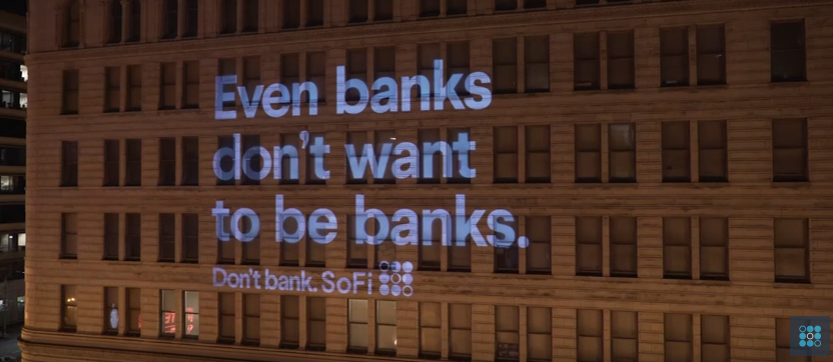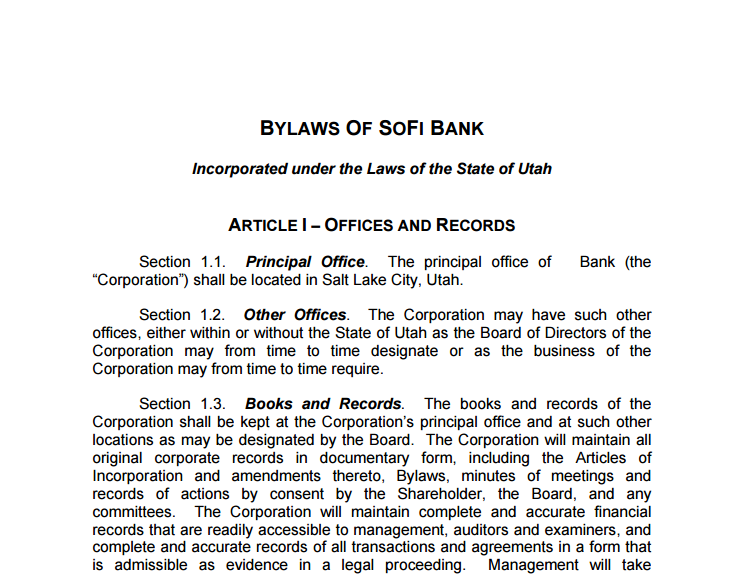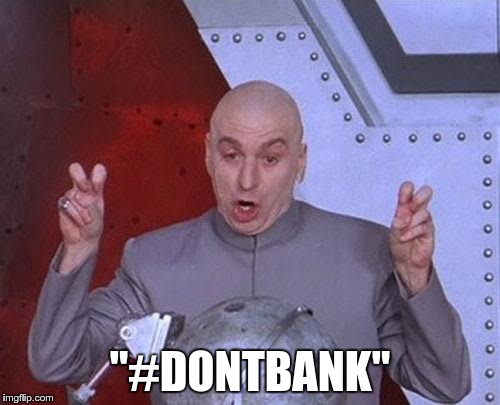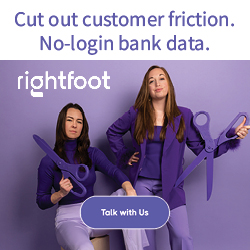Student Loans
That Awkward Moment in Alternative Lending When…
June 13, 2017That awkward moment when you apply for a bank charter (::cough:: SoFi ::cough::) and you realize your company’s motto has literally been #dontbank all along…


Just, don't do it. #DontBank pic.twitter.com/lnxKJHH3QJ
— SoFi (@SoFi) February 11, 2016

Banks send you statements. Our statement is we don’t like banks. Check us out at https://t.co/B5YXtHWKL0. #DontBank pic.twitter.com/RshfsAhdYR
— SoFi (@SoFi) January 26, 2016
Happily not a bank. http://t.co/bDN6i1Fd5W #SoFiSoFun
— SoFi (@SoFi) August 25, 2015








You can view the full bank charter application of the anti-bank whose slogan was #dontbank, here. You can also read an article about it on TechCrunch.
The Tesla of Alternative Lending
May 16, 2017 Tesla has autopilot. Apple has Siri. And Upstart has its own high-tech software model that places the startup in a category of its own for online lending. All three of these companies may be very different but what they have in common is a reliance on artificial intelligence and machine learning for their proprietary technology.
Tesla has autopilot. Apple has Siri. And Upstart has its own high-tech software model that places the startup in a category of its own for online lending. All three of these companies may be very different but what they have in common is a reliance on artificial intelligence and machine learning for their proprietary technology.
“You hear so much about how Tesla cars will drive themselves, how Google or Amazon home assistants talk to you to as if you’re human. In lending we are the first company to apply these types of technologies to lending,” Dave Girouard, Upstart co-founder and CEO told deBanked.
So what is machine learning exactly, particularly as it relates to finance? One of the main components that goes into machine learning is not looking at the same data everybody else does. “We are known for looking beyond FICO and the credit report. We look at who the employer is, what industry you work in, where you went to college, what you studied, several hundred variables affect how we price credit,” he said.
Upstart, a direct-to-consumer lending platform, uses artificial intelligence and machine learning for everything from verifying a potential borrower’s identity, to making a credit decision, to pricing credit. Today 25 percent of the company’s loans are 100% automated.
“This is a radical departure from the industry,” said Girouard. “It’s a function of being able to build more automation to verify information about the borrower.”
Indeed the differences between machine learning and traditional credit models is kind of like comparing a self-driving vehicle to walking.
“The whole term machine learning implies that software gets smarter and better on its own with no human intervention. Every day thousands of repayments are made to Upstart along with delinquencies, and defaults. As this happens the software is adjusting its pricing on the next loan, learning in real time every day,” Girouard said, without even the slightest concern of tipping his hand.
“We have a several year head start and a data science team that are math and statistics PhDs. These are the types of people hired by Google or Tesla or Amazon. Traditional consumer credit doesn’t tend to have machine learning skills,” he added.
Nevertheless his vision for artificial intelligence and machine learning in the lending community is far greater than as it applies to Upstart alone. “We think virtually all flavors of lending will depend on AI/ML within 10 years. We’re at the very early stages, but it’s hard to imagine a successful lender anywhere who doesn’t use similar technology over time,” Girouard said.
Inside Upstart
Upstart is a hybrid lender that funds 20% of loans from their balance sheet. Two months ago they began licensing software as a service (SaaS). The software is managed by Upstart but it appears on the partner’s website. “A bank could use our technology to originate loans,” said Girouard, adding that the company is in conversations with two-to-three dozen banks about future partnerships.
The machine learning approach seems to lend itself to favoring certain demographics. In the case of Upstart, this happens to be millennials, evidenced by the lender’s average customer age of 28, almost all of whom have college degrees.
“Obviously we understood early that the millennial generation doesn’t have 20 years of credit history and they have a hard time getting loans. It struck us, tell me you wouldn’t give a loan to a 25 year old just because they have a thin credit file? It doesn’t make sense. What if they studied at Stanford and work at Google? There is more to be known about an individual than a FICO score,” said Girouard.
Perhaps the greatest evidence of whether or not Upstart’s approach is working is to catch a glimpse of the company’s balance sheet. Upstart expects to reach the $1 billion milestone for loan originations in calendar 2017. And perhaps even more telling is they anticipate being profitable by the summer. “An IPO for us would be a couple of years out,” Girouard said.
That timing could be perfect, particularly considering Wall Street’s apparent love/hate relationship with some players in the alternative lending space.
“People tend to paint the whole industry with one brush and it’s not a very pretty brush at the moment. But soon they will begin to appreciate there is a significant difference between these companies. Upstart really does have a very differentiated and unique product,” said Girouard.
Does SoFi Want $500 Million for Global Expansion?
September 8, 2016Online lender SoFi is looking to raise $500 million in equity capital to fund new projects and possibly expand to international markets.
The San Francisco-based lender is in talks with investors and maybe just weeks away from finalizing the deal, according to The Wall Street Journal. If the deal goes through, it might be one of the biggest fintech deals of the year, said the report.
SoFi has had an eventful year so far, to say the least. Led by ex-Wells Fargo executive Mike Cagney, the company laid plans in the beginning of the year to start a dating app to appease millennial borrowers, started a hedge fund to buy loans, made a bunch cheeky, controversial commercials, appointed Deutsche Bank’s ex CEO Anshu Jain to its board, made unusual hires, funded $1 billion in student loans and got knee deep in mortgages. SoFi’s strategy since inception has been to stay relevant for its borrowers at every stage of their lives, starting with student loans, personal loans, all the way through to a mortgage.
One of the fastest growing private lending companies, SoFi’s backers include marquee investors like Peter Thiel, Prosper Loans’ President Ron Suber, Discovery Capital, Softbank and Morgan Stanley.
Caution! Politics Ahead: Amazon Breaks Student Loan Ties With Wells Fargo
September 7, 2016Was it easy come and easy go for the Amazon-Wells Fargo partnership?
Not long after the two companies signed a multiyear contract to market private student loans to Amazon Prime Student subscribers, the ecommerce giant retreated after finding itself in a political soup.
Caught in the crossfire between the two bastions of private and federal student loans, the partnership ended rather abruptly after The Institute for College Access & Success, or Ticas, a nonprofit focused on higher education and student-loan issues called the partnership an attempt to dupe students.
“This is the kind of misleading private loan marketing that was rampant before the financial crisis. It is a cynical attempt to dupe current students who are eligible for federal students loans with a record low 3.76% fixed interest rate into taking out costly private loans with interest rates currently as high as 13.74%,” said TICAS in a statement issued last week, “Amazon and Wells Fargo are trumpeting a 0.5% discount while burying the sky-high rates on these private loans and without noting that they lack the consumer protections and flexible repayment options that come with federal student loans.”
This was exacerbated by the CFPB’s allegations that the bank engaged in illegal student loan practices — by misleading borrowers on partial payments, charging certain consumers late fees for payments made on the last day of the grace period and failing to correct inaccurate information on credit reports of borrowers. Wells Fargo, the second-largest private student lender neither denied nor admitted to the charges but however, settled the matter for $4.1 million.
The partnership was an one up for private student lending especially against growing private entrants like SoFi and CommonBond. With it being undone, what’s next?
Alleged Illegal Student Loan Practices Cost Wells Fargo $4 Million
August 23, 2016Without admitting or denying any of the CFPB’s findings, Wells Fargo has consented to a $3.6 million fine over alleged unfair penalties imposed on certain student borrowers. They must pay another $410,000 to cover consumer injuries.
The South Dakota-based Education Financial Services is a division of Wells Fargo that lends to approximately 1.3 million consumers in all 50 states.
“If a borrower made a payment that was not enough to cover the total amount due for all loans in an account, the bank divided that payment across the loans in a way that maximized late fees rather than satisfying payments for some of the loans,” CFPB said in a statement.
The bank also misled borrowers on partial payments, charged certain consumers late fees for payments made on the last day of the grace period and also failed to correct inaccurate information on credit reports of borrowers.
Reuters quoted a Wells Fargo spokesperson saying that the settlement revolves around procedures that were retired or improved many years ago and impacts a small number of customers.
The bureau also required the bank to provide consumers with disclosures explaining how the bank applies and allocates payments and correct inaccurate information on borrower credit reports.





























